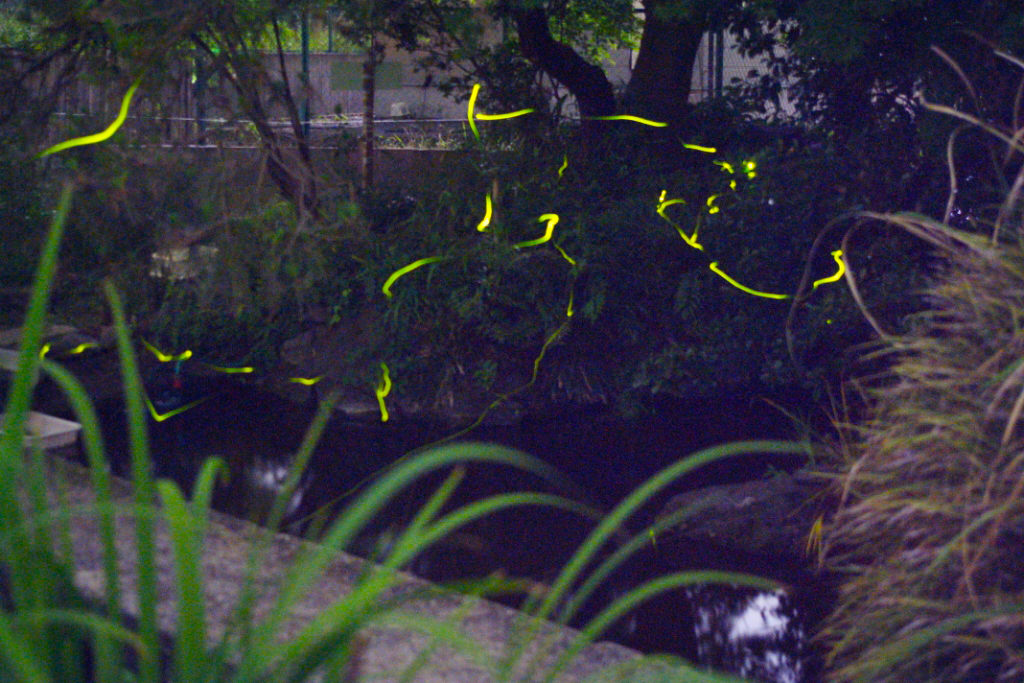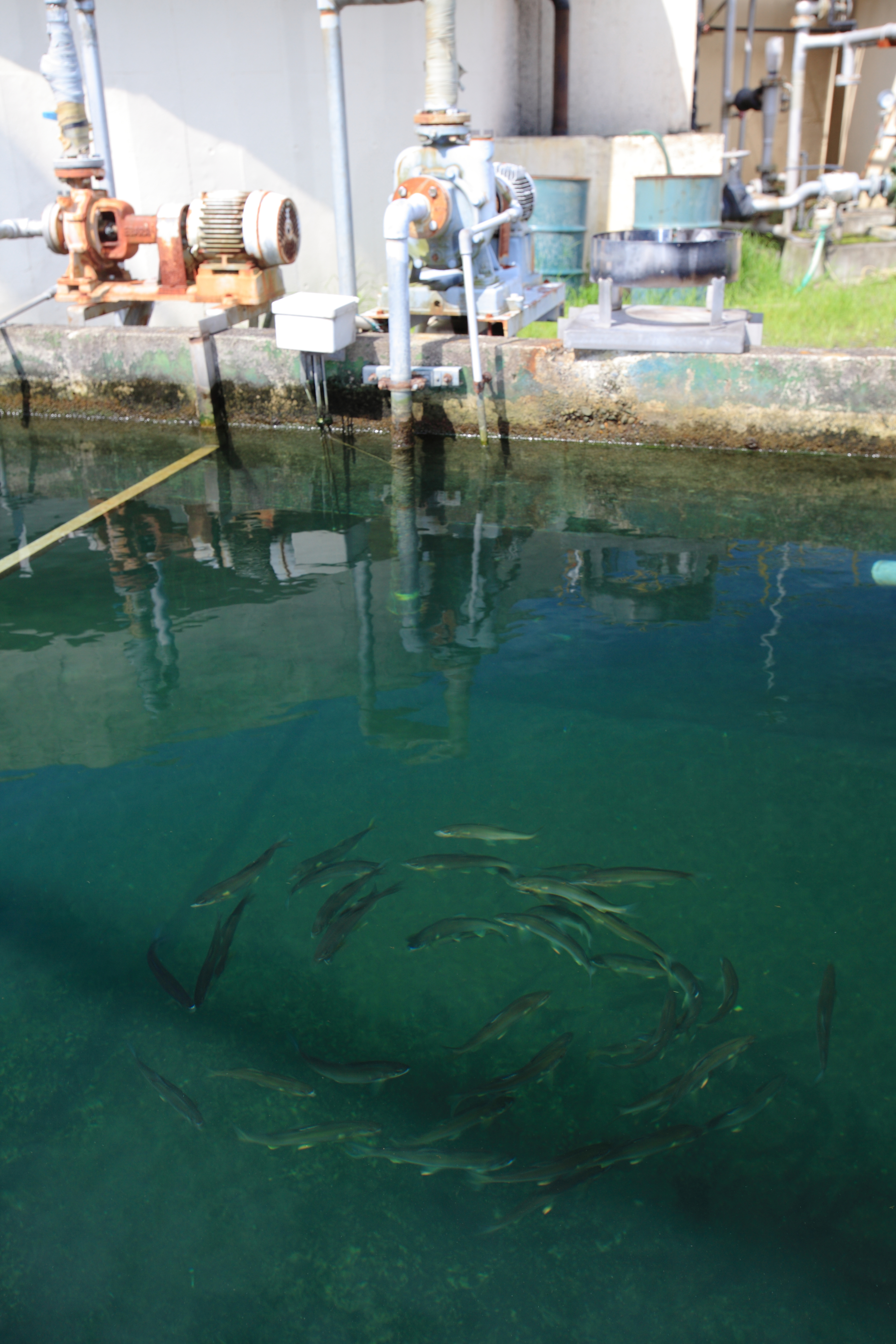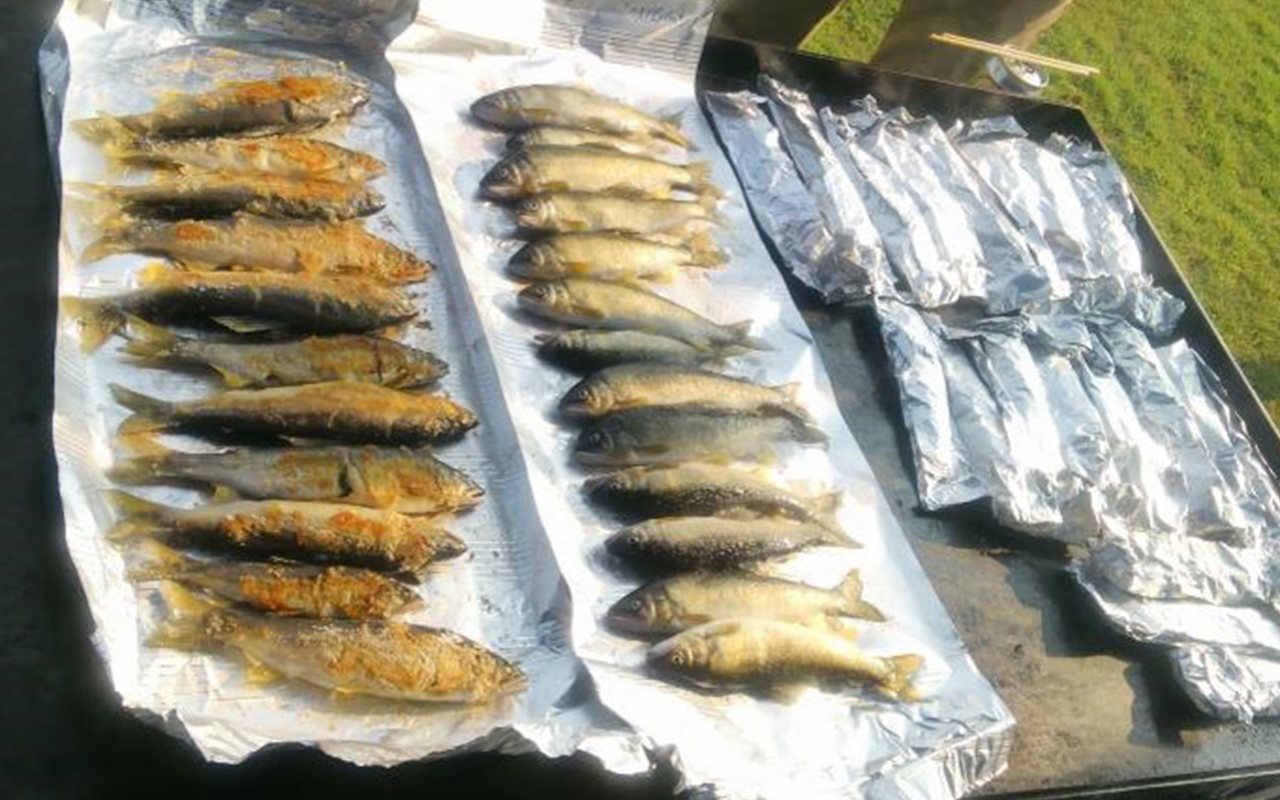We recognize the direct and indirect impacts of our business activities on biodiversity and check and evaluate constantly whether or not effluent from our factories is affecting the ecosystem.
Since it started operating in 1964, the Ibaraki Factory has been taking measures to purify effluent from the factory to protect the water environment of Lake Kasumigaura, into which the effluent flows. It has undertaken an ongoing activity of rearing fish in the purified effluent. In 2008, it renewed the effluent purification facility to preserve the water environment at a higher level and began to rear fireflies in a biotope created on the premises of the factory. Starting from 2009, fireflies emerge from pupae and fly in the night sky in early summer every year. This proves that effluent from the Ibaraki Factory is purified to a level that allows fireflies, which can live only in fresh streams, to make it their habitat.

- 拡大
- Fireflies flying around the biotope of the Ibaraki Factory
- 拡大
- A firefly emerging from a pupa on the premises of the Ibaraki Factory
Following its success in rearing fireflies, the Ibaraki Factory began to rear ayu sweetfish in 2011 to prevent moss from attaching to the final effluent tank of the factory.
At the beginning of May every year, young fish are released into the tank, and they grow to larger than 20 centimeters by August.
A rough standard of water quality that permits ayu sweetfish to make it their habitat is an average Biochemical Oxygen Demand (BOD)※ value of 3mg/l or below. The growth of the fish in the final effluent is proof that the quality of the effluent from the factory is on the same level as that of a fresh stream. The fish are grilled with salt at the summer festival and served to people in the local community.
※ Biochemical Oxygen Demand (BOD)
BOD is the amount of dissolved oxygen needed by aerobic biological organisms to break down organic material present in the water. It is used mainly as an index for the degree of water pollution of rivers.


